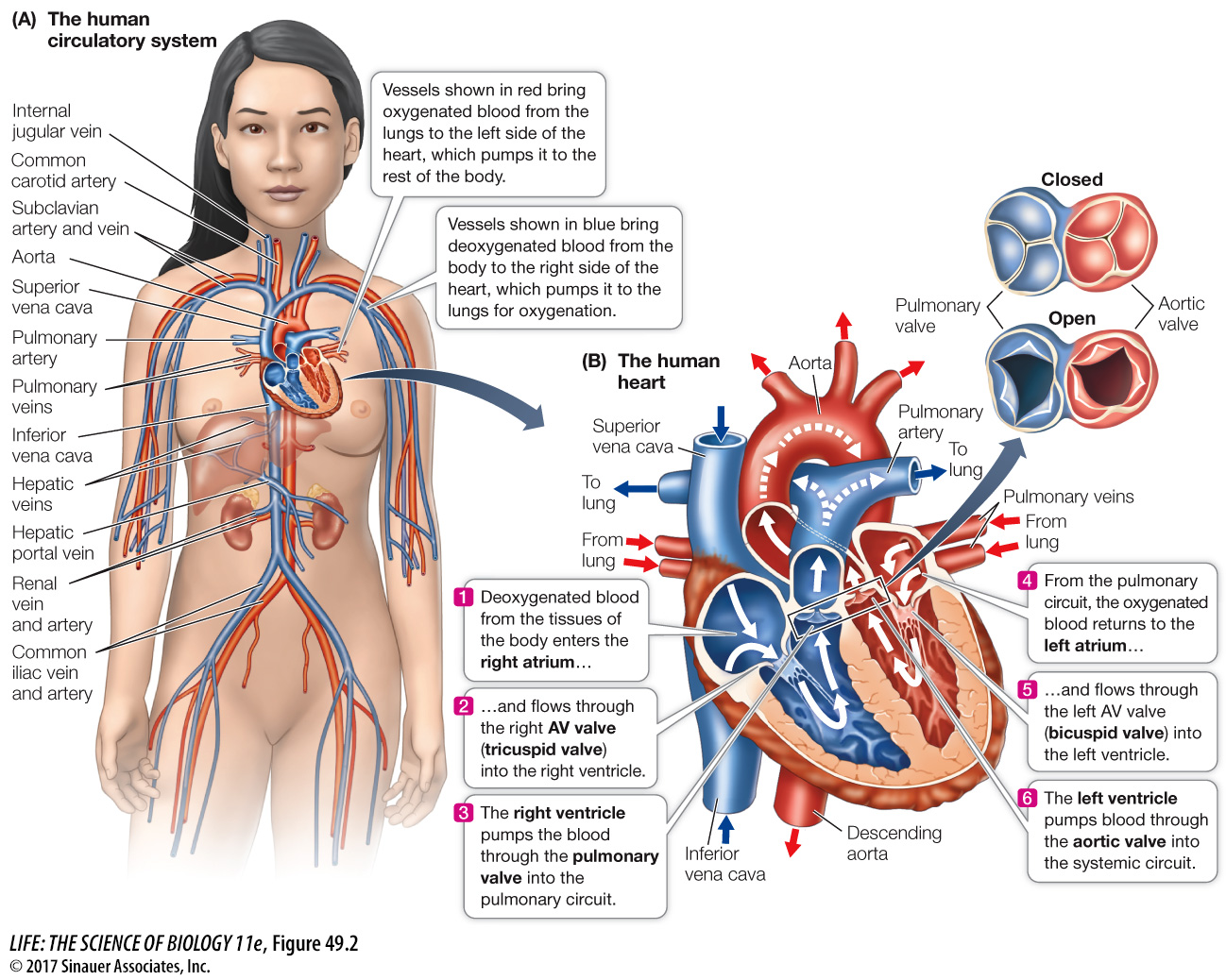Heart Function Depends on Properties of Cardiac Muscle
In this section we describe in detail the structure and function of the mammalian heart, using the human heart as the example. We first trace the paths of blood flow through the heart and the body, and then we examine the unique electrical properties of cardiac muscle that result in the rhythmic contractions of the heart.
Blood flow in mammalian hearts goes from right atrium to right ventricle to lungs and from left atrium to left ventricle to the systemic circulation. Valves prevent backflow.
In each cardiac cycle, both atria contract first, followed by both ventricles contracting, which is then followed by relaxation.
Action potentials in cardiac muscle cells depend on the properties of the ion channels in their membranes.
The mammalian heart, and therefore the human heart, has four chambers—a right and a left atrium and a right and a left ventricle (Figure 49.2). The right atrium receives blood from the systemic circuit, and the left atrium receives blood from the pulmonary circuit. The right ventricle pumps blood through the pulmonary circuit, and the left ventricle pumps blood through the systemic circuit.

Figure 49.2 The Human Heart and Circulation (A) The major blood vessels of the body either carry blood away from the heart (arteries) or return blood to the heart (veins). (B) In the human heart, blood flows from right side of the heart to the lungs to the left side of the heart and then out to the body. The atrioventricular valves prevent blood from flowing back into the atria when the ventricles contract. The pulmonary and aortic valves prevent blood from flowing back into the ventricles from the arteries when the ventricles relax.
Activity 49.2 The Human Heart
One-way valves between the atria and ventricles, the atrioventricular (AV) valves, prevent backflow of blood into the atria when the ventricles contract. The right AV valve is called the tricuspid valve because it has three leaves. The left AV valve is called the bicuspid valve because it has two leaves. The bicuspid valve is also called the mitral valve because it has the shape of a religious headdress called a miter. There are also one-way valves between the ventricles and the arteries leaving the heart. The pulmonary valve goes to the lungs, and the aortic valve goes to the aorta. These two valves are also called semi-lunar valves because their separate leaves are shaped like half moons.
